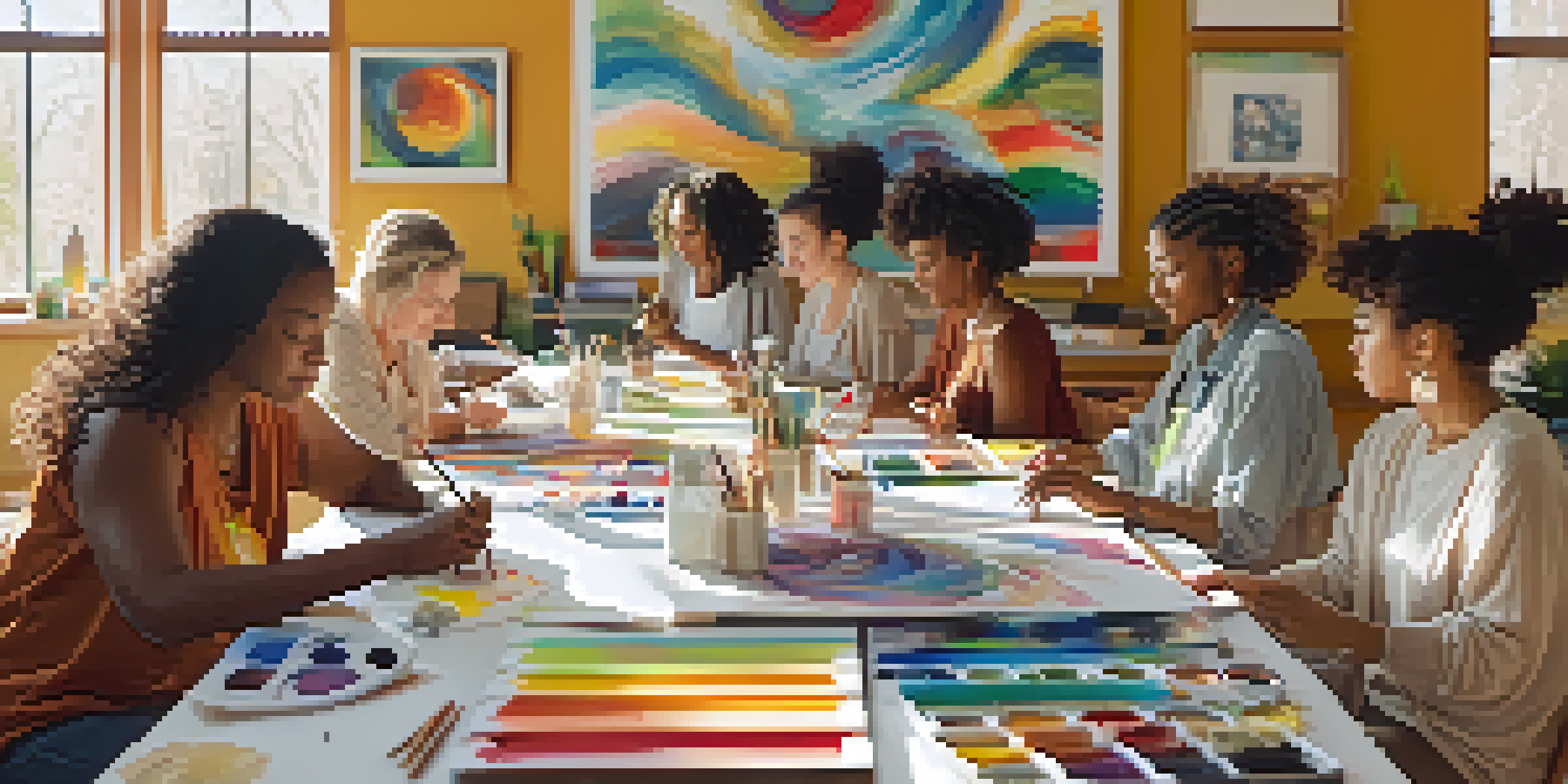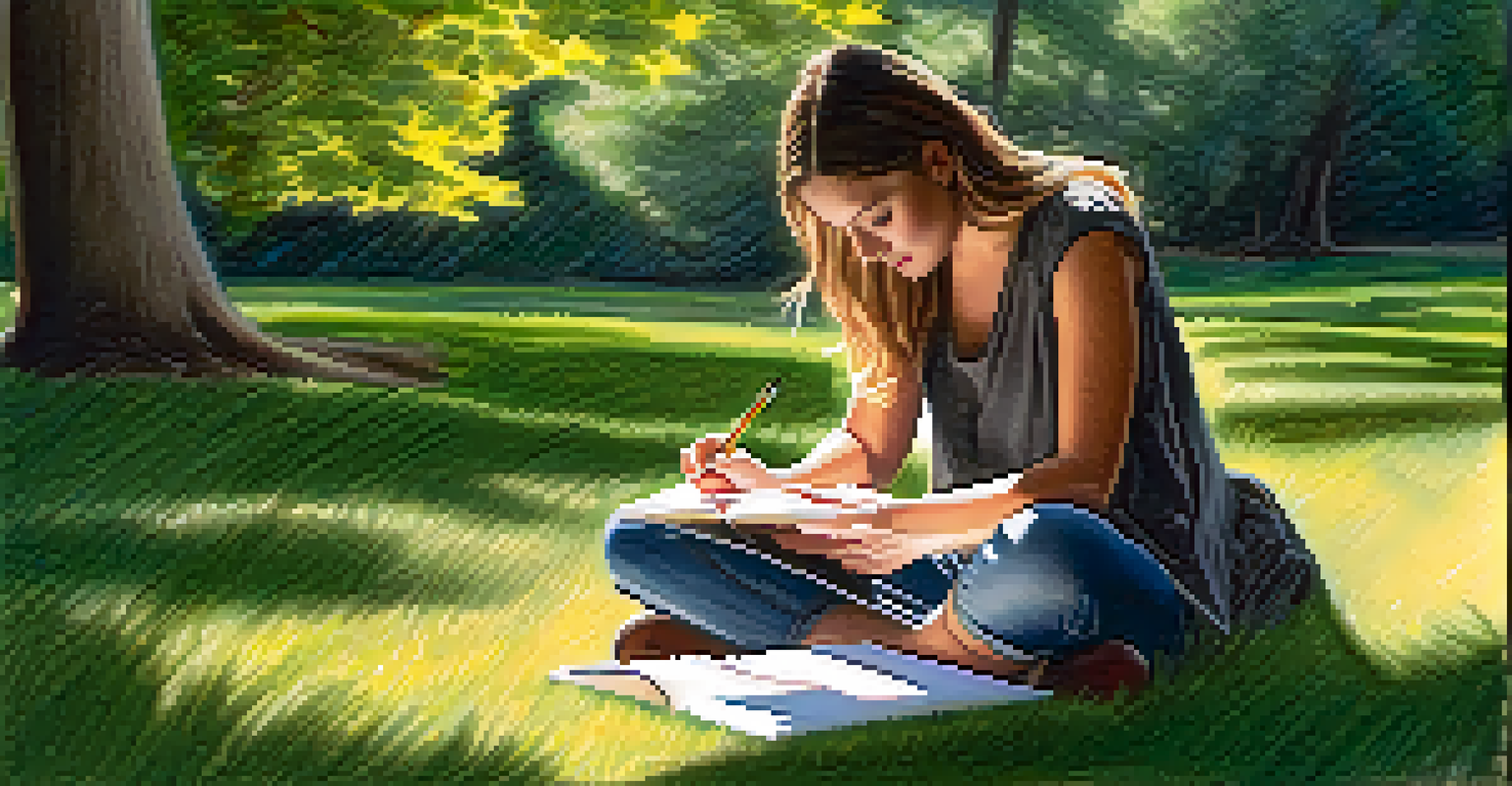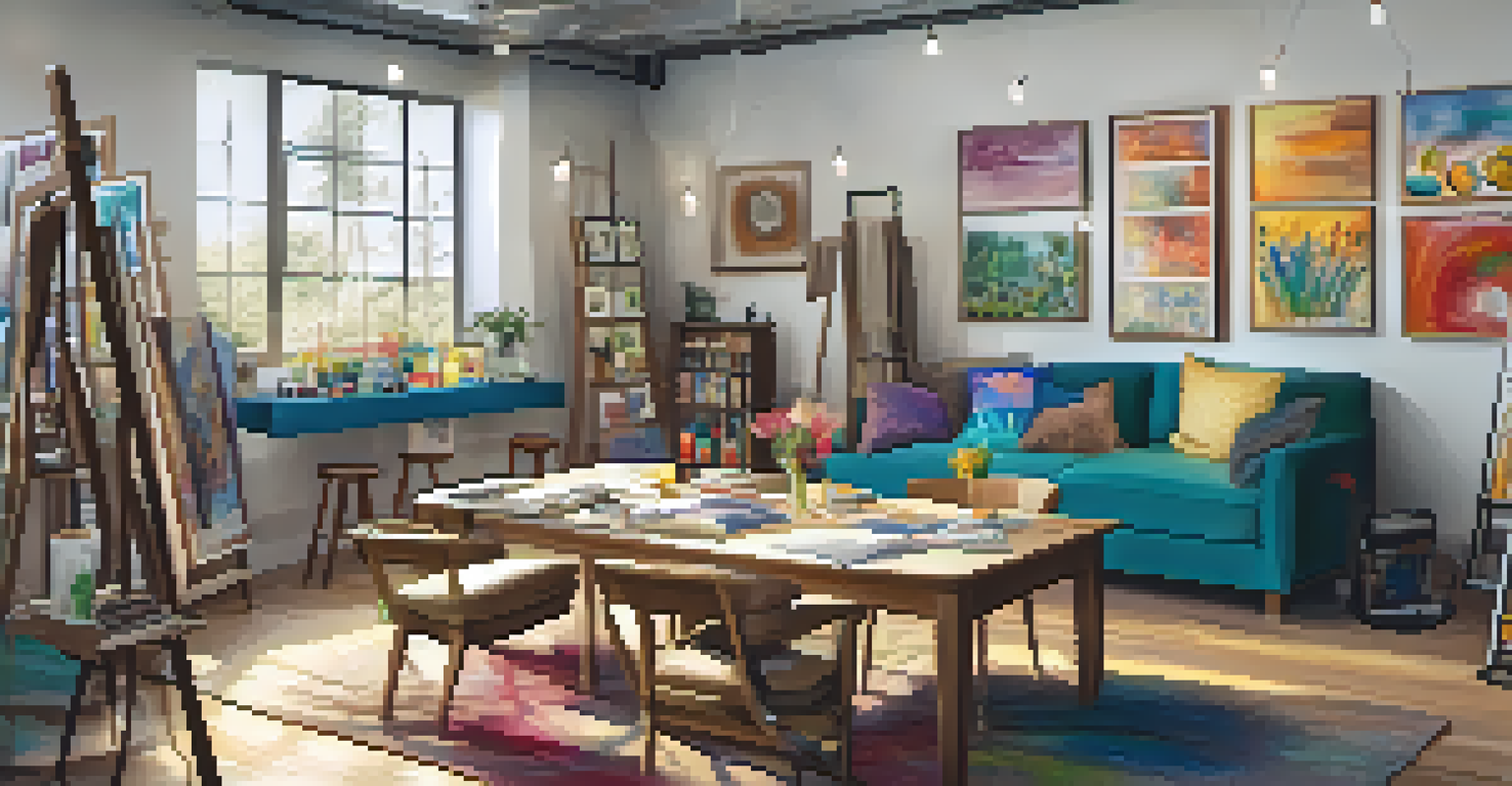Using Painting and Drawing as Therapy in Addiction Recovery

Understanding Art Therapy in Addiction Recovery
Art therapy is a powerful tool that uses creative expression to help individuals heal from addiction. It provides a safe space for people to explore their feelings and thoughts without the pressure of spoken language. This is particularly beneficial for those who find it challenging to articulate their emotions verbally.
Art enables us to find ourselves and lose ourselves at the same time.
In the context of addiction recovery, art therapy allows individuals to express complex emotions, such as pain, anger, or joy, which may be difficult to confront directly. By engaging in painting or drawing, they can create visual representations of their struggles and aspirations. This process not only fosters self-discovery but also encourages emotional release.
Moreover, art therapy can enhance self-esteem and build resilience, essential components in overcoming addiction. Participants often experience a sense of accomplishment and empowerment as they create something tangible. This newfound confidence can be a crucial step on the road to recovery.
The Benefits of Painting in Recovery
Painting offers a unique outlet for emotions that can be hard to express through words alone. The act of applying color to canvas can be cathartic, allowing individuals to process feelings related to their addiction. Many find that the physical act of painting helps them focus their mind and release stress.

Additionally, painting can serve as a form of mindfulness, grounding individuals in the present moment. This focus on the now can be particularly helpful for those recovering from addiction, as it reduces ruminating thoughts about the past or worries about the future. It encourages a sense of peace and clarity.
Art Therapy Aids Emotional Healing
Art therapy provides a safe space for individuals in recovery to express complex emotions and foster self-discovery.
The visual nature of painting also allows for a personal narrative to unfold, creating a story that reflects the journey of recovery. This not only helps individuals understand their experiences better but also provides a sense of connection to others who may share similar struggles.
Drawing: A Simple Yet Powerful Tool
Drawing, much like painting, serves as a therapeutic outlet for those in recovery. It requires minimal materials and can be done almost anywhere, making it an accessible form of expression. The simplicity of drawing allows for spontaneity and creativity, which can be liberating.
The purpose of art is not a rarified, intellectual distillate; it is life, intensified, brilliant life.
Many people find that drawing helps them visualize their thoughts and emotions, giving shape to what might feel chaotic inside. This visual representation can facilitate conversations about feelings that might be difficult to discuss otherwise. It transforms abstract emotions into something concrete.
Furthermore, drawing can be a collaborative process, encouraging social interaction and support among peers in recovery. Group drawing sessions can foster a sense of community, allowing individuals to share their experiences and insights through their artwork.
How Art Therapy Complements Traditional Treatments
Art therapy does not replace traditional addiction treatments; rather, it complements them beautifully. Integrating creative expression into established recovery programs can enhance overall therapeutic outcomes. It provides an additional layer of support for individuals navigating their recovery journey.
Incorporating art therapy allows for the exploration of underlying issues that may contribute to addiction, such as trauma or unresolved grief. Traditional therapies often focus on cognitive and behavioral aspects, while art therapy taps into emotional and psychological processes. This holistic approach can lead to deeper healing.
Painting Promotes Mindfulness
Engaging in painting helps individuals focus on the present moment, reducing stress and creating a sense of peace.
Moreover, art therapy sessions can serve as a safe space for individuals to reflect on their progress in recovery. By creating art, they can visually track their journey, celebrating milestones and acknowledging challenges. This reflective practice can reinforce their commitment to sobriety.
Creating a Safe Environment for Artistic Expression
A key element of art therapy is the creation of a safe and supportive environment. It's essential for individuals to feel free to express themselves without fear of judgment. A nurturing space encourages participants to delve into their emotions and experiences openly.
Facilitators of art therapy play a crucial role in establishing this environment. They guide participants gently, helping them explore their artistic capabilities while providing encouragement. This supportive presence can make all the difference in someone’s willingness to engage with the art-making process.
Additionally, privacy is often respected in art therapy settings, allowing individuals to keep their creations to themselves or share them if they choose. This autonomy empowers participants, reinforcing their control over their recovery journey.
Incorporating Art into Daily Life for Sustained Recovery
Incorporating art into daily routines can be a powerful tool for sustaining recovery. Regular engagement in creative activities can provide individuals with a positive outlet for stress and emotions. This consistency can reinforce healthy coping mechanisms.
Simple activities, such as doodling during a break or painting a small canvas at home, can become part of a daily self-care routine. These practices not only promote relaxation but also encourage mindfulness, helping individuals stay grounded in their recovery efforts.
Art Complements Traditional Treatments
Integrating art therapy with traditional addiction treatments enhances overall healing by addressing emotional and psychological processes.
Moreover, maintaining a creative practice allows for continual self-discovery. As individuals evolve in their recovery, their art can reflect these changes, offering insights into their growth and transformation over time.
Success Stories: Art in Action
Many individuals in recovery have shared inspiring stories about how art therapy has transformed their lives. For example, a former addict turned artist credits painting with helping her navigate the emotional turmoil of her past. Through her artwork, she found a voice that allowed her to express her pain and ultimately heal.
These success stories illustrate the profound impact that creative expression can have on the recovery process. People often report feeling more connected to themselves and others, fostering a sense of belonging and understanding through shared artistic experiences.

As the stigma surrounding addiction continues to diminish, more individuals are finding the courage to embrace art as a vital part of their recovery journey. These narratives not only inspire hope but also highlight the importance of holistic approaches in overcoming addiction.